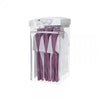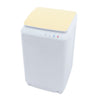Chamber Septic System Information Page
In a traditional system the trench is filled with gravel. The uneven shape of the gravel performs 2 functions:
- The voids in between the gravel are filled with oxygen (most of the time) and these pockets of oxygen allow aerobic bacteria to exist.
- The voids also provide temporary storage for the effluent in the trench until it can drain out of the trench into the surrounding soil.
There are a few drawbacks to gravel however. The first is one of quality control. The gravel must be clean washed gravel. If the contractor uses dirty gravel with a high content of fines, this dust will clog the pores of the surrounding soil causing the system to fail.
The other problem is these small voids do not provide a very large storage area for the effluent.
What is a chamber septic system? Chambers are like a pipe cut in half lengthwise. They also have slits in the sides to allow for migration of the effluent through the sides (the bottom of any trench will get plugged in a few years anyhow and the majority of the water leaving the trench will be through the sidewalls).
The same trench is dug but instead of putting in gravel you place these open bottom sections in the trench. Chamber septic systems have two distinct advantages over gravel:
- The quality control is not an issue because you know what you are getting (gravel you are never sure).
- The open area in the chamber offers a much larger storage capacity. In fact some states will offer a size reduction if you use chambers. But I would not recommend taking advantage of this size reduction…the bigger the trench the better because you have more volume.
A chamber septic system is a little more expensive than gravel but the savings in labor (they are much easier and faster to install) offset the costs.













